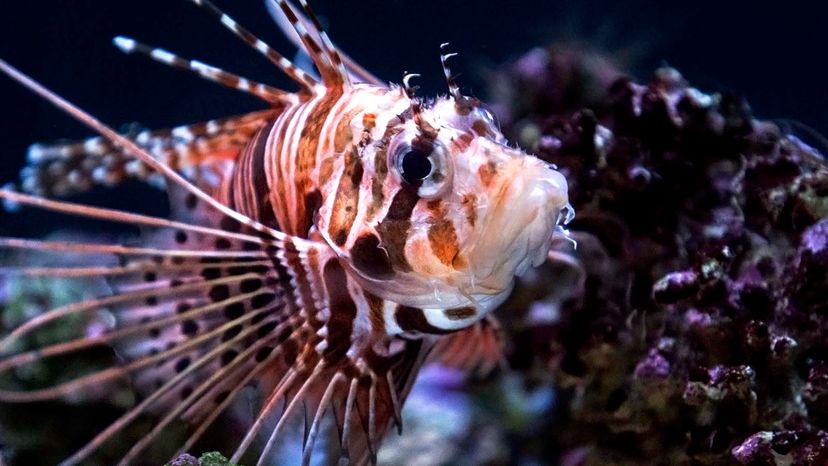
Although the lionfish (Pterois volitans) is visibly gorgeous, there's much more to this mysterious creature (also referred to as turkeyfish and firefish) than its striking maroon, brown and white stripes, elegant fan-like fins and delicate floating tentacles. When it's not occupying people's saltwater tanks, for example, the popular ornamental yet carnivorous fish has somehow managed to infiltrate tropical waters worldwide, where it has been busy greatly reducing not only native fish populations, but also wreaking havoc on delicate reef ecosystems.
While no one can pinpoint exactly how the alien invasion occurred beyond the species' native Indo-Pacific region, the population explosion is likely to have begun off of the Atlantic Coast in the mid-1980s when an aquarium owner dumped unwanted lionfish into the wild, according to National Geographic. Ocean currents and hurricanes have since aided in the spread from Florida's Atlantic Coast to the Bahamas, throughout the Caribbean Sea and into the Gulf of Mexico. They are mostly found in warm, tropical waters within a variety of habitats, from rocky bottoms to coral and artificial reefs, and can be seen at depths of up to 300 feet (91 meters).
Advertisement
"Lionfish haven been a problem as an invasive species in the Atlantic Ocean since the first sighting in Florida in 1985," says Alex Lawlor, a senior aquarist at the Aquarium of the Pacific in Long Beach, California, in an email interview. "An invasive species is a species that is introduced to a new environment where they have little to no predators and cause harm to the native species. In the case of the lionfish, with no natural predators within the Atlantic Ocean, they eat small fish and crustaceans, often the juveniles of important commercial species, such as snapper."
A lionfish can expand its stomach more than 30 times in volume when eating a large meal, according to Lawlor. It's also capable of long-term fasting, and can go without food for more than 12 weeks without dying. It doesn't help matters that lionfish start reproducing when they are less than 1 year old and can lay up to 30,000 eggs every four days, and have very few natural predators, which means they can erase about 80 percent of a reef fairly quickly. In fact, research has shown that the rapid increase in lionfish coincided with a 65 percent native fish decline in the Atlantic during a two-year period.
Here, some other interesting facts about the lionfish.
Advertisement


